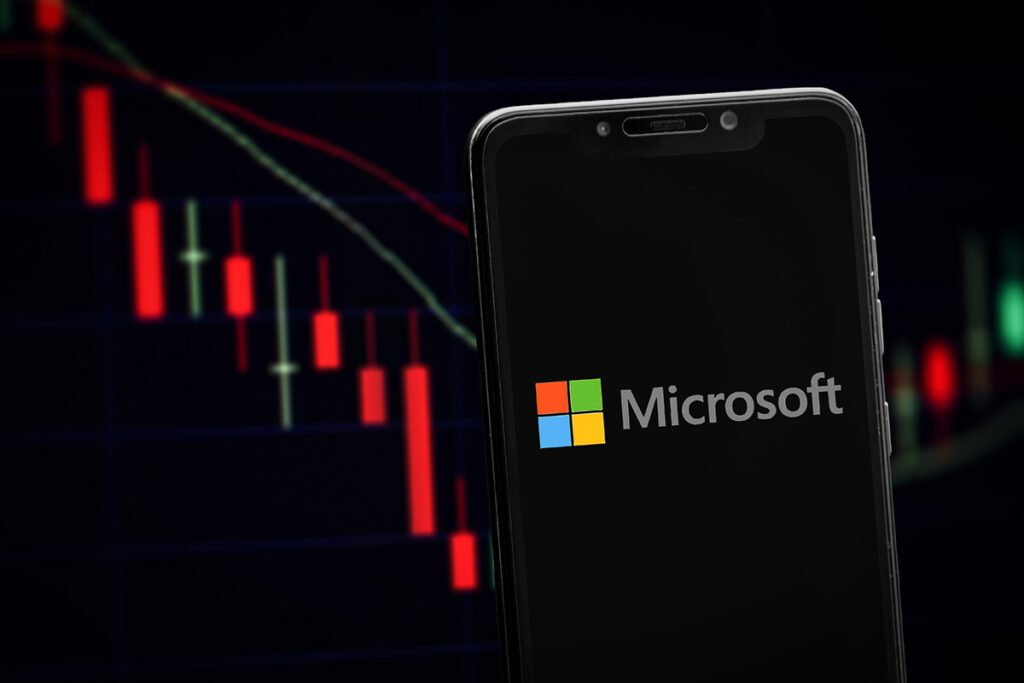TLDR
- Goldman Sachs has increased Microsoft’s price target from $480 to $550
- Microsoft’s recent Q3 showed revenue of $70.1 billion, up 13% year-over-year
- Azure cloud business grew 33%, showcasing strength in cloud computing sector
- AI investments expected to help reach $300+ billion in cloud revenue by fiscal 2029
- Top investor Julian Lin projects 13-15% returns for years to come despite premium valuation
Wall Street is showing renewed enthusiasm for Microsoft as its stock continues to recover from early 2025 turbulence. Goldman Sachs analyst Kash Rangan has boosted the company’s price target to $550, maintaining a Buy rating on the tech giant.
The new target represents a substantial increase from the previous $480 mark. Microsoft currently trades around $458.87 with a market cap of $3.41 trillion.
Analyst support for Microsoft has been growing stronger in recent months. According to market data, 25 analysts have revised their earnings estimates upward.
The higher price target comes after Rangan attended the Microsoft Build conference. He was impressed by the company’s artificial intelligence strategy and execution.
Microsoft’s AI initiatives are now projected to help drive more than $300 billion in cloud revenue by fiscal year 2029. This represents major growth from current levels.

Cloud Performance Drives Optimism
Microsoft’s Azure cloud platform has become a key growth driver. Recent earnings showed Azure revenue grew by 33% year-over-year.
This growth rate exceeded many analysts’ expectations. It demonstrates Microsoft’s competitive strength against rivals in the cloud computing space.
The company now operates Azure across more than 70 regions globally. This extensive infrastructure gives Microsoft advantages in scale and geographic reach.
At the Build conference, Microsoft unveiled several enhancements to its AI capabilities. These included expanding developer access and deepening platform integration.
The company introduced the Model Context Protocol (MCP) for agentic AI. This shows commitment to creating open standards in the emerging field.
GitHub Copilot has now reached more than 15 million developers. This tool helps coders work more efficiently with AI assistance.
Microsoft also launched an enhanced Copilot agent and expanded Copilot Studio. These tools allow for fine-tuning and orchestrating multiple AI assistants.
Financial Strength and Market Position
Microsoft’s recent financial results have helped drive investor confidence. The company reported FY 2025 Q3 earnings that beat expectations.
Revenue reached $70.1 billion for the quarter. This represents a 13% increase compared to the same period last year.
Operating income grew even faster at 16% year-over-year, totaling $32.0 billion. This improving profitability has attracted investor attention.
Since the earnings report, Microsoft’s stock has climbed approximately 16%. The company is now up almost 10% year-to-date despite earlier market challenges.
Julian Lin, ranked among the top 1% of stock analysts, sees Microsoft as a reliable performer. He notes, “In a world of uncertainty, investors may be looking for reliability.”
Lin believes Microsoft has “proven time and time again that it has a resilient growth engine while balancing growth and profitability.” This balance is becoming increasingly rare in tech.
The 5-star investor acknowledges Microsoft trades at premium multiples compared to peers. However, he believes the company’s scale, profitability, and reliability justify this premium.
Lin projects strong future returns, stating he sees “a clear path for 13% to 15% forward returns for many years to come.” He maintains a Buy rating on the stock.
Wall Street broadly agrees with this positive outlook. Microsoft currently holds 30 Buy ratings and only 5 Hold ratings, giving it a Strong Buy consensus.
The average 12-month price target stands at $509.41, suggesting further upside potential from current levels. Some targets, like Goldman’s $550, are even more optimistic.
Microsoft has regulatory news working in its favor as well. The European Union is likely to accept the company’s proposal to adjust Office pricing, resolving a longstanding antitrust issue.
Meanwhile, the company continues investing in AI safety through its partnership with OpenAI. A new hub for safety evaluations of AI models has been launched to enhance transparency.
Microsoft’s P/E ratio currently stands at 35.21, trading near its 52-week high of $468.35. This valuation reflects investor confidence in future growth prospects.
